Eggplant is a versatile, nutritious fruit (though it’s prepared and treated like a vegetable) that’s ideal for vegetarian and Mediterranean dishes. While not difficult to grow, the eggplant can be finicky; it’s important to know when your eggplant is ready to be harvested.
In this article, we’ll cover clear signals your eggplant is ready to be harvested and some helpful tips on storing them for later use.
Let’s dig in!
1. The Eggplant Is 6-8 Inches Long
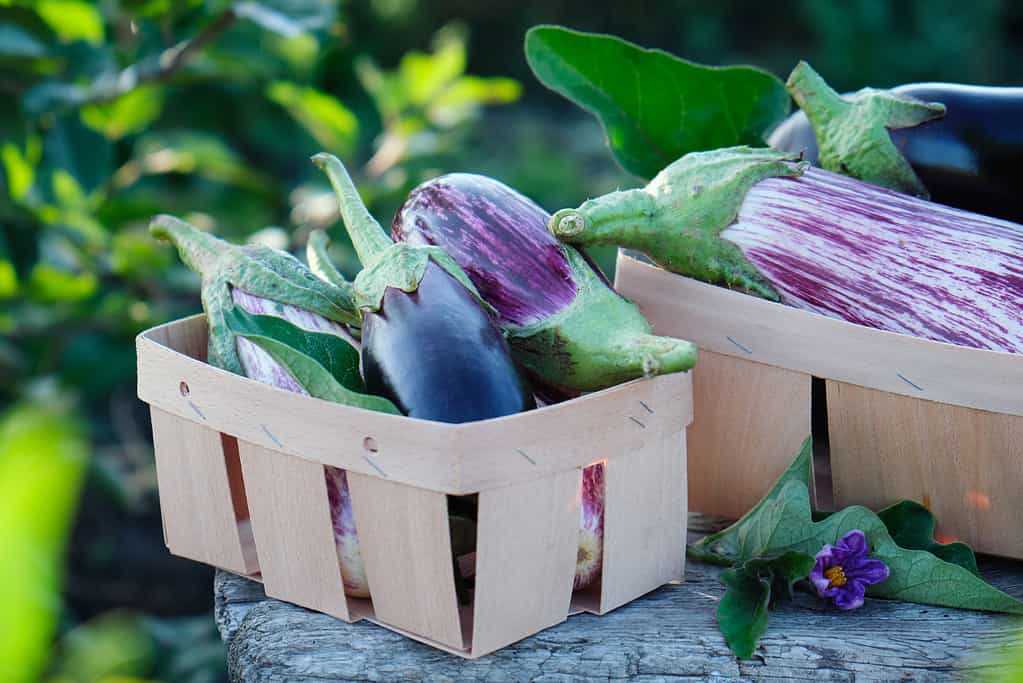
Eggplant is ready to harvest when it reaches 6-8 inches long.
©Valentina_G/Shutterstock.com
The first signal your eggplant is ready to be harvested is its length. Like zucchini, eggplant is at peak freshness when it reaches 6-8 inches long. This also makes it the perfect size for consistency when cooking zucchini and eggplant dishes, like ratatouille.
You can let eggplant grow longer, but it tends to become bitter as it ages. Check your plants regularly to get the most out of your harvest. Regular picking promotes new growth and a higher yield!
2. The Eggplant Is Elongated
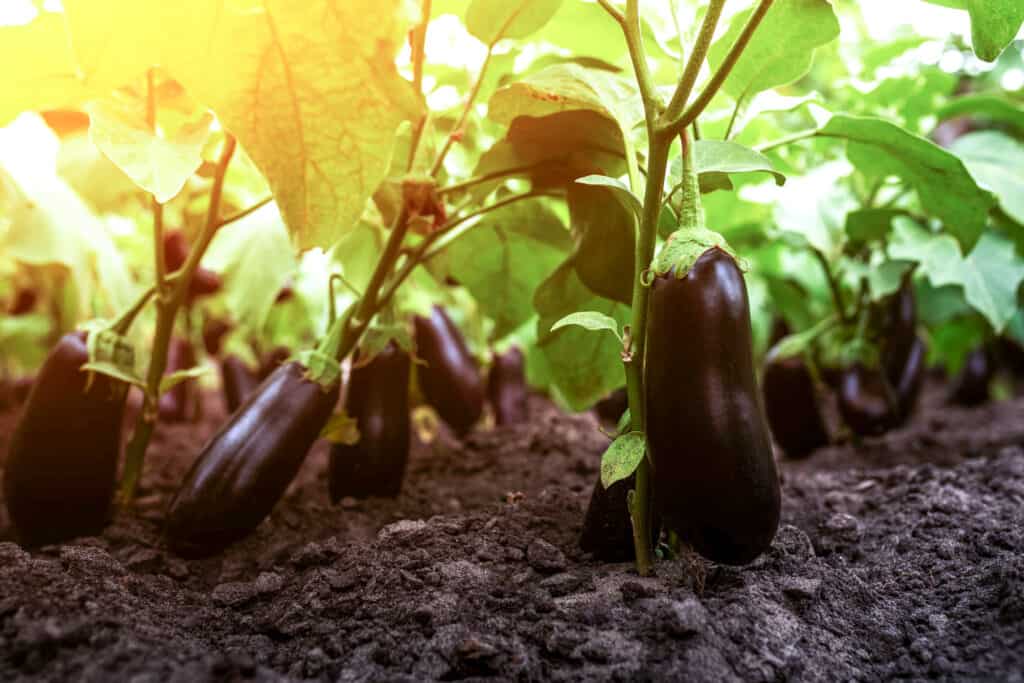
The eggplant should be elongated unless it’s a round variety.
©iStock.com/Lari Bat
The next sign that an eggplant is ready to pick is its shape. When eggplants first appear, they’ll be quite round. Most varieties will elongate as they grow into an oval or tubular shape. If the eggplant is still round, it’s underripe.
There are exceptions to this rule. Some varieties, like the Indian eggplant or Thai eggplant, stay round at full maturation.
3. The Eggplant Has a Rich, Vibrant Color
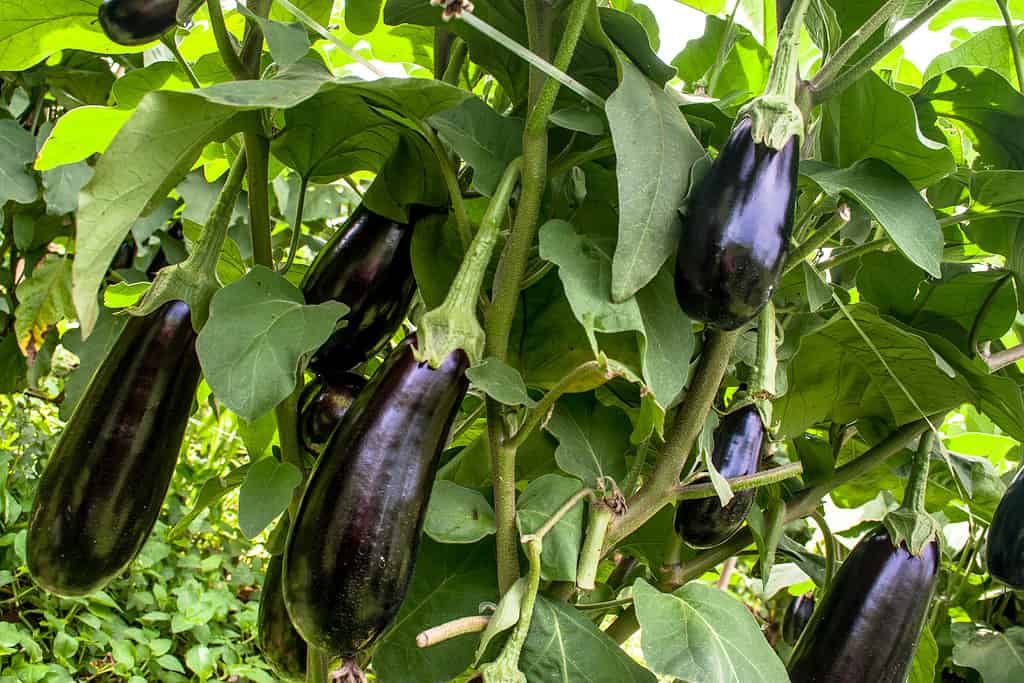
Ripe eggplants have a glossy, vibrant color and green cap.
©Alf Ribeiro/Shutterstock.com
When an eggplant is fully ripe, it will have a vibrant, uniform color and glossy sheen—typically purple. If the eggplant is dull or muted, it may be overripe or on the verge of going bad.
The eggplant’s cap color is another signal your eggplant is ready to be harvested. The cap should be a vibrant green. If it’s still purple, the eggplant isn’t ripe yet. If the cap is brown, it’s overripe and may be on the verge of going bad.
4. The Eggplant Is Firm With Some Give
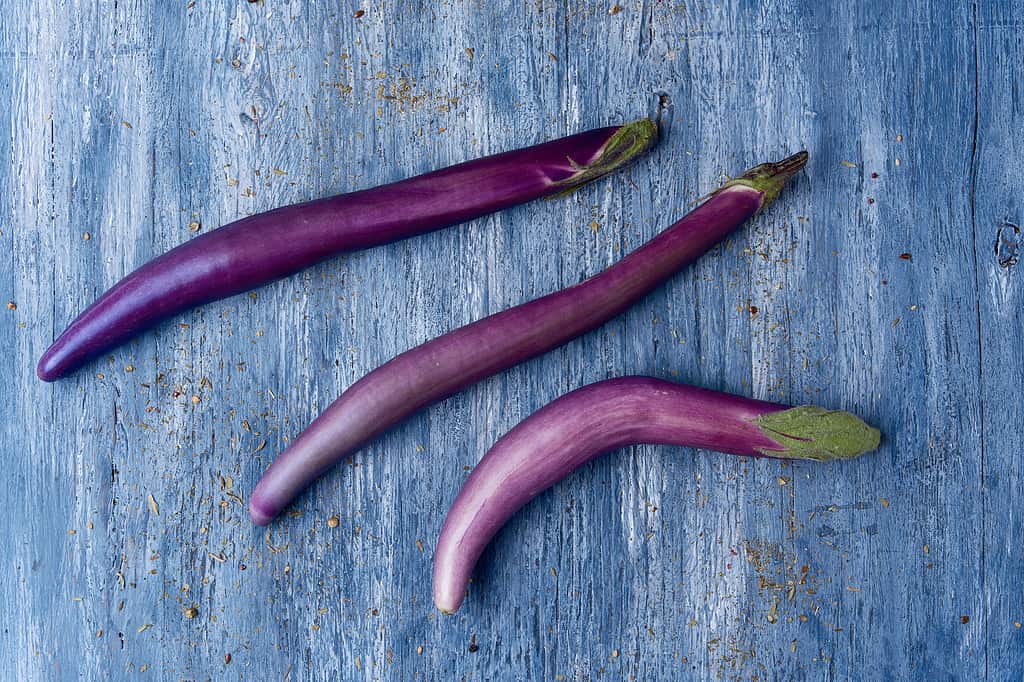
The eggplant should feel firm with a bit of give.
©nito100/iStock via Getty Images
If you squeeze your eggplant, it should be firm with a bit of give. If the eggplant is hard, it’s not ready for harvesting. Conversely, if it’s soft, it may be overripe or bad.
The skin should also feel smooth and evenly textured. If it’s wrinkly or soft, dispose of the eggplant away from the rest of the crop.
5. The Eggplant Has Some Heft
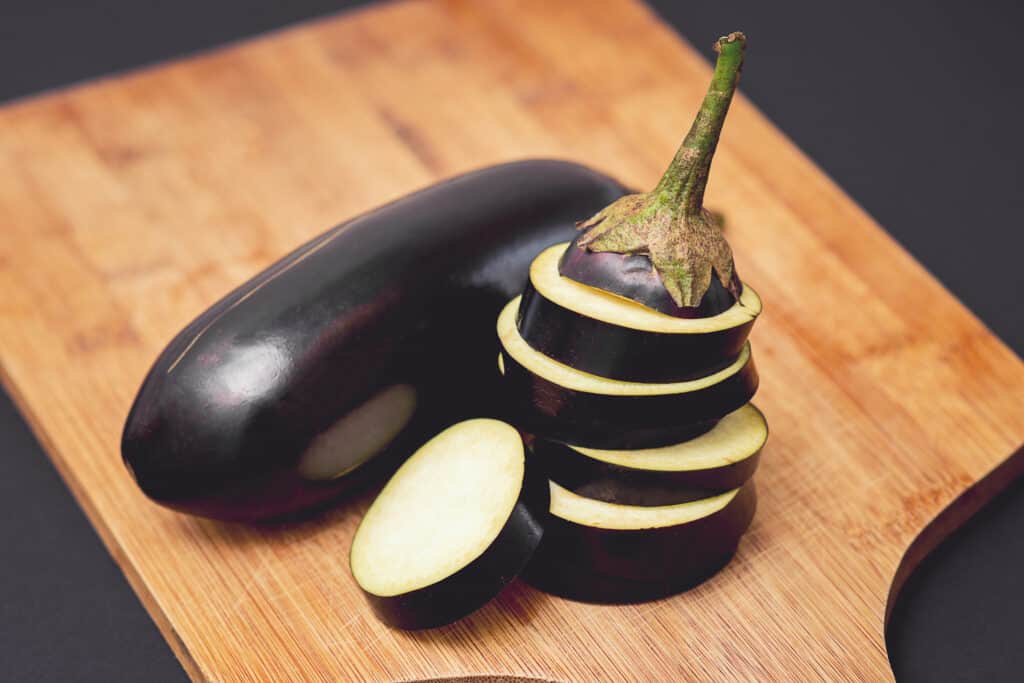
The eggplant should feel weighty and full of moisture.
©iStock.com/okskukuruza
The eggplant should have some weight to it when you pick it up. It should feel dense and full of deliciousness. If the eggplant feels hollow or too light, it may be dried out and past its prime.
How to Store Eggplant in the Fridge
Keep eggplant in the fridge by wrapping it in a dry paper towel and placing it directly in the crisper. You can also store it in an open paper bag in the crisper to allow for airflow.
If your eggplant is underripe, you can ripen it quicker by closing the paper bag and leaving it on the counter. When it ripens, transfer it to the fridge and leave the paper bag open.
Do not wash your eggplant before storing it; wait until you’re preparing them for use. Eggplant will last 1-2 weeks in the fridge.
How to Freeze Eggplant: Top Two Methods
If you find yourself with extra eggplant, you can freeze them for later use. Here are the two most effective ways to store your eggplant in a freezer.
1. Blanching and Freezing
Blanching and freezing is the best way to save your eggplant at peak ripeness.
- Bring a pot of water to a boil.
- Cut the eggplant into even slices.
- Prepare an ice bath of cold water.
- Toss the sliced eggplant into the boiling water for one minute.
- Quickly drain the eggplant and dip it in the ice bath.
- Let the slices dry on a cookie rack or dishtowel.
- Transfer the blanched eggplant to a sealable bag, forcing out the extra air.
- Label and seal the bag before putting it in the freezer.
The blanching process helps keep the firmness and coloration and removes any microbes that could cause it to break down.
2. Pureeing and Freezing
This method for freezing eggplant requires roasting first. You can use the puree to make delicious dips, like baba ganoush.
- Slice the eggplants into thick rounds or halves and drizzle with olive oil and salt.
- Roast at 385°F for 45-60 minutes or until the flesh is soft and tender.
- Leave the eggplant to cool completely.
- Scoop out the cooked flesh and add to a blender or bowl with an immersion blender.
- Mix until smooth.
- Transfer the pureed eggplant to airtight containers, packing them full to remove air pockets.
- Label and add to the freezer.
Eggplant will keep 2-3 months in the freezer at a consistent temperature or up to 6 months in a deep freeze. However, it’s recommended to use the eggplant within 2-3 months for ideal freshness and flavor.
Signs Your Eggplant Is Ready for Harvesting: A Summary
| Ranking | Sign Eggplant is Ready to Harvest |
|---|---|
| #1 | The Eggplant is 6-8 Inches Long |
| #2 | The Eggplant is Elongated |
| #3 | The Eggplant Has a Rich, Vibrant Color |
| #4 | The Eggplant is Firm With Some Give |
| #5 | The Eggplant Has Some Heft |
The photo featured at the top of this post is © Africa Studio/Shutterstock.com
Thank you for reading! Have some feedback for us? Contact the AZ Animals editorial team.







